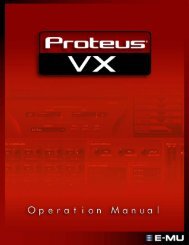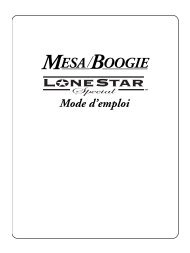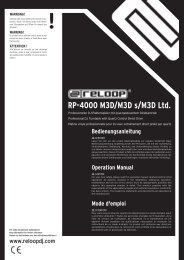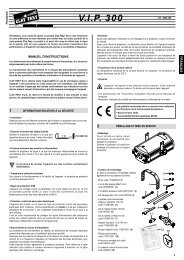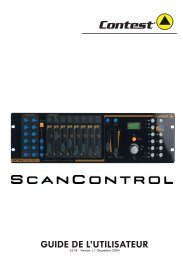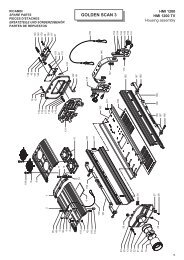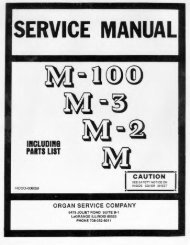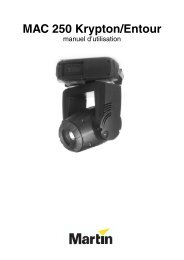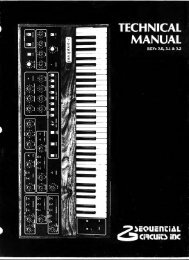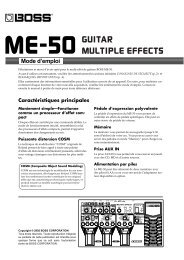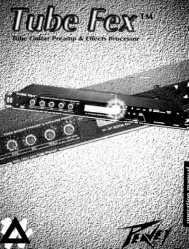Create successful ePaper yourself
Turn your PDF publications into a flip-book with our unique Google optimized e-Paper software.
The Algorithms and their Parametersyou should set the SIZE control to approximate the size of the acoustic space youare trying to create, before adjusting anything else. The size in meters is roughlyequal to the longest dimension of the space. Moving SIZE while a signal ispresent may cause audible transients on critical material.The apparent size of the space created is actually a combination of the settingsof the SIZE, SHAP, and SPRD controls. Small acoustic spaces are characterizedby a rapid buildup of diffusion. However, both small and large spacesfrequently have an uneven buildup of initial reverberation. This uneven buildupis controlled by the SPRD and SHAP controls.ROLL sets the frequency above which a 6 dB/octave low-pass filter attenuatesthe processed signal. It attenuates both pre-echoes and reverberant sound.High frequencies are often rolled off with this parameter, resulting in more naturalsounding reverberation. The low-pass characteristic can be modified to ashelving charactistic with the SHLF control. When SHLF is off, ROLL is typicallyset betwen 2kHz and 4kHz.ROLL (Hi Freq Rolloff)PDLY adjusts an additional time delay between the input of signal and the onsetof reverberation. The control is not intended to mimic the time delays in naturalspaces. In real rooms the build-up of reverberation is gradual, and the initial timegap is usually relatively short. Natural spaces are best emulated by setting SHAPat a middle value and adjusting SPRD for the desired effective pre-delay.PDLY (Pre-Delay)Additional delay added with the PDLY control can increase the initial time gapslightly, emulating a situation where reverberant pick-up microphones arelocated much further from the source than the main microphones. If less thanabout 30ms of pre-delay is added, this additional delay can add clarity with somemusic, but it can also sound unnatural. Large pre-delays can be useful for slapechoeffects.RLVL sets the amount of reverberation in the processed signal. It is normallyFULL, but may be reduced for effects where the pre-echoes should dominate.RLVL (Reverb Level)TDCY sets the frequency above which sounds decay at a progressively fasterrate. It filters all the sound except the pre-echoes. When set relatively low, it givesa darker tone to the reverberation, simulating the effect of air absorption in a realhall. TDCY also helps keep the ambience generated by the program frommuddying the direct sound.TDCY (Treble Decay)BASS sets the reverb time for low-frequency signals, as a multiplier of the RTIMparameter. For example, if BASS is set to 2X, and RTIM is set to two seconds,the low frequency reverb time will be four seconds. For a natural-sounding hallambience, we recommend values of 1.5X or less.BASS (Bass Multiply)XOVR sets the frequency at which the transition from RTIM to BASS takes place.XOVR should be set at least two octaves higher than the low frequency you wantto boost. For example, to boost a signal at 100 Hz, set XOVR to 400 Hz (Thissetting works well for classical music). XOVR works best around 400 for boostinglow frequencies, and around 1.5 kHz for cutting low frequencies.XOVR (Bass Crossover)4-5


